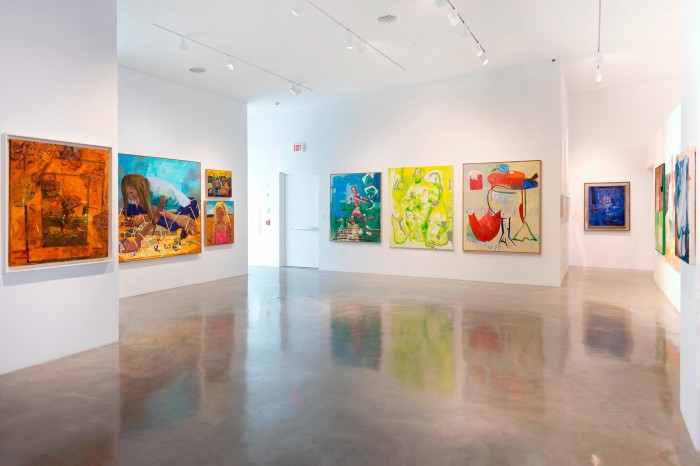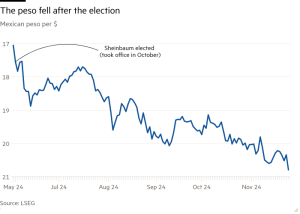Miami’s private galleries — the great succession question

When the private gallery founded by Cuban-American collector Rosa de la Cruz closed abruptly following her death in February, the art world was stunned.
For 15 years, visitors in Miami for Art Basel had flocked to her 30,000 sq ft space in the city’s Design District to see her trove of contemporary art. It included important work by the late Cuban-American artist Félix González-Torres and by the feminist artist Ana Mendieta, another Cuban, as well as paintings, sculptures and installations by hundreds of others, such as Peter Doig, Thomas Houseago and Glenn Ligon.
By May, much of this art was for sale at Christie’s. “One of the most important publicly available contemporary art collections in Miami — and the world — will be sold to the highest bidder,” lamented the Miami Herald.
The demise of the de la Cruz Collection, amassed with money made in the beverage distribution business run by Rosa’s husband, Carlos, followed the closure in 2018 of the gallery founded in downtown Miami by the Cuban-born Ella Fontanals-Cisneros for the display of her Latin American art.

“By definition these private collection buildings are not permanent. They’re a very different thing to a museum which is not tied to a single person or family,” says Craig Robins, the developer of the Design District, who has put his own collection on public display in the offices of his company Dacra.
It’s easy to forget that collector-run spaces in Miami are the precarious ventures of a few very wealthy individuals rather than permanent, public institutions. With their sleek galleries, lively exhibition programmes and outreach and education work, they have helped kick-start the city’s nascent art scene in the past 20 years and were an important factor in persuading Art Basel to locate its first art fair overseas there.
Today, the range of contemporary work on show in Miami and the number of private individuals putting art on public display is in great part a testament to the influence of these powerful buyers. But the galleries they preside over lack the infrastructure required to ensure organisational longevity, such as boards or endowments. So, will they survive beyond the lifetimes of their founders?
Two important collector-run spaces remain in Miami. One opened in 1999, in a vast repurposed warehouse in the Wynwood District, to show art bought by the real estate developer Martin Margulies, who declines to give his age but is believed to be in his eighties. It hosts shows drawn from his wide-ranging collection of works in every media, including major installations by the likes of Magdalena Abakanowicz, IOlafur Eliasson and Anselm Kiefer.
Margulies has four adult children but none of them are interested in running his 50,000 sq ft space, he says. “We’ve never discussed it. I’m so happy my children have made a life for themselves independently of me. I never wanted them to be beholden to me,” he says over the phone from Miami.
Although Margulies is still acquiring art — “I bought two works in New York last week, a sculpture by the Argentine artist Adrián Villar Rojas and a painting by Olafur Eliasson” — he is not overly preoccupied with its future after he is gone. “I collect this work for my own gratification. I’m not looking to have a legacy.” He does not say so overtly, but he implies that his gallery will eventually close: “I’ll be giving a lot of art to various institutions around the country.”
The future of Miami’s other big collector-run space, the Rubell Museum, is less clear. Don Rubell, 84, and his wife Mera, 81, first opened a gallery in Wynwood in 1993. In 2019, the hoteliers, who inherited the fortune of Don’s brother, Studio 54 co-founder Steve Rubell, moved the gallery to a 100,000 sq ft industrial site in Allapattah which was converted into a spectacular exhibition space with a restaurant and garden by Selldorf Architects. Their collection now encompasses close to 8,000 works and their displays of emerging talent have the power to launch artistic careers.
The Rubells declined to talk to the FT and have never disclosed their plans for the future, but their son, Jason, is widely expected to take over the gallery once his parents are gone. He already helps run the space alongside them and director Juan Roselione-Valadez, according to the gallery website, and is a regular fixture at international art fairs and biennials.
One thing we do know is that the Rubells’ heirs will not be able to sell the collection for personal profit. Like the Margulies collection, but not the de la Cruz, the family museum, which also has a branch in Washington, DC, is registered as a non-profit, tax-exempt organisation. Galleries can only obtain this designation from the Internal Revenue Service “if they represent to the IRS that if they close, the art will either be transferred to another tax-exempt organisation or, if it is sold, the proceeds will be transferred to another charity in the US. That’s the bond you make with the IRS. The family will not profit at all,” explains Michael Duffy, head of art planning at Merrill. (These rules do not apply to art owned by the family rather than their tax-exempt organisation.)
Argentine-born real-estate billionaire Jorge Pérez, 75, has taken a different approach to the display of his collection. In 2011, he donated hundreds of Cuban and Latin American works worth $15mn, plus $20mn in cash, to the Miami Art Museum, which was then in the process of fundraising for a move from its nondescript home downtown to a new waterfront building on Biscayne Bay, designed by Swiss architects Herzog & De Meuron with $100mn from Miami-Dade County. He has since gone on to donate close to $40mn in cash and more art to the institution, which renamed itself the Pérez Art Museum Miami (PAMM) in his honour. This brings his total donations to about $85mm in cash and art, including a promised gift of 50 works from the African diaspora, according to figures supplied by Pérez.

“I have always believed that there is no great city without a great public museum,” Pérez tells me on a video call from Aspen. “If you go to New York, Paris, London or Berlin, they all have great museums. This says something about the city and its people. Miami is a growing city without great collections that compare to those around the world but, in the field of contemporary art, as we mature, we will be able to compete.”
He has since gone on to open his own private space, El Espacio 23, in a repurposed warehouse in Allapattah, to show the art he has bought since donating most of his collection to PAMM in 2011 and is now considering how to ensure its long-term survival, either by creating an endowment or handing it over to PAMM to run in the future. “Will it continue to be there after I’m around? Yes. This art is meant for the public and it will continue to be seen by the public,” Pérez says.
As one generation of outstanding collectors passes away and Miami’s artistic ecosystem continues to evolve, one development may be the growing influence of the city’s museums. Following Rosa de la Cruz’s death, her husband Carlos sold the building housing the family collection to the Institute of Contemporary Art Miami next door for $25mn, a hefty discount on its market value. The ICA Miami owes its own existence to private donors, most notably Norman and Irma Braman who fully funded the building of the museum in the Design District on land donated by Craig Robins and his partners. It opened in 2017, is building an endowment, and is funded almost entirely by its board and other private supporters.
“We’ve lost Rosa and her vision as a collector and we’ll all really miss her,” says Robins. “But she and Carlos have given the ICA Miami the ability to double its exhibition space. And that’s an extremely positive step for the city.”
#Miamis #private #galleries #great #succession #question






